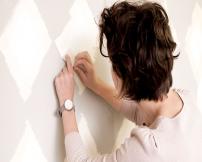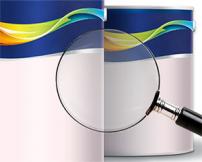What is the Dulux Promise?
Good to see you!
Welcome to Dulux
Terms & Conditions
Registration complete
Successfully registered, please login
Registration complete
Forgotten your password?
Please enter email address associated to your account
Change Password
Password changed successfully.
Request sent!
For more tailored inspiration, please fill in the 3 questions below.
Thanks!
Delete Account

Dr Dulux: Paint Brushes Explained
Brush up before your next visit to the paint brush aisle
Do you know your masonry brush from your natural bristle? Know when to use your synthetic and when to use the fitch brush? Read on as Dr Dulux guides you through the differences.

Masonry Brush – this is a generous long bristle brush with a firm texture, usually made of natural bristle. Perfect for applying water-based masonry paints to the exterior painted brickwork or render.
Tip: Grip the brush by the ‘stock’ rather than holding it by the handle alone for more control.

Synthetic or acrylic brushes – perfect for all water-based interior finishes. The smooth texture and springiness of the bristles make it easier to achieve an even finish and make ‘cutting in’ (creating the straight lines between different surfaces) really easy. They are especially good for painting woodwork and furniture in water-based satin, eggshell and gloss finishes.
Tip: Look after these and they’ll last for years. Make sure you get all the paint out of the bristles before storing them away, If you get bent bristles, dip in hot water and they should regain their shape.

Natural bristle brushes – swell in water-based paints and, although this helps them hold more paint (less dipping into the can), it also means that it’s harder to be precise with them. These work well with traditional solvent-based paints on furniture or woodwork.
Tip: Use a good brush cleaner to wash out solvent-based paints. If you are using water-based paints, make sure that after cleaning you store them somewhere dry. You can maintain beautifully straight bristles if you wrap the paint brush in newspaper while it’s still slightly damp.

Cutting in brush – A cutting brush is designed for getting the perfect straight edge between the walls, ceilings and skirting boards etc. If you try one, you will never be happy with a straight bush for this job again…
Tip: Don’t overload the brush. Smooth, confident downward strokes will result in cleaner lines.

Wallpaper smoothing brush – A wallpaper smoothing brush is used to smooth over the surface of wallpaper after it has been hung in order to gently push out any trapped air bubbles.

Dusting brush – A dusting brush has nice long soft bristles and is used for brushing the dust off surfaces after sanding and before applying paint.

Fitch – can be round or flat and are useful little brushes for touching up small areas and getting into awkward nooks and crannies (like behind pipework and plus sockets).
If you enjoyed brushing up on all things paint brushes, check out Dr Dulux: Leftover Paint.









